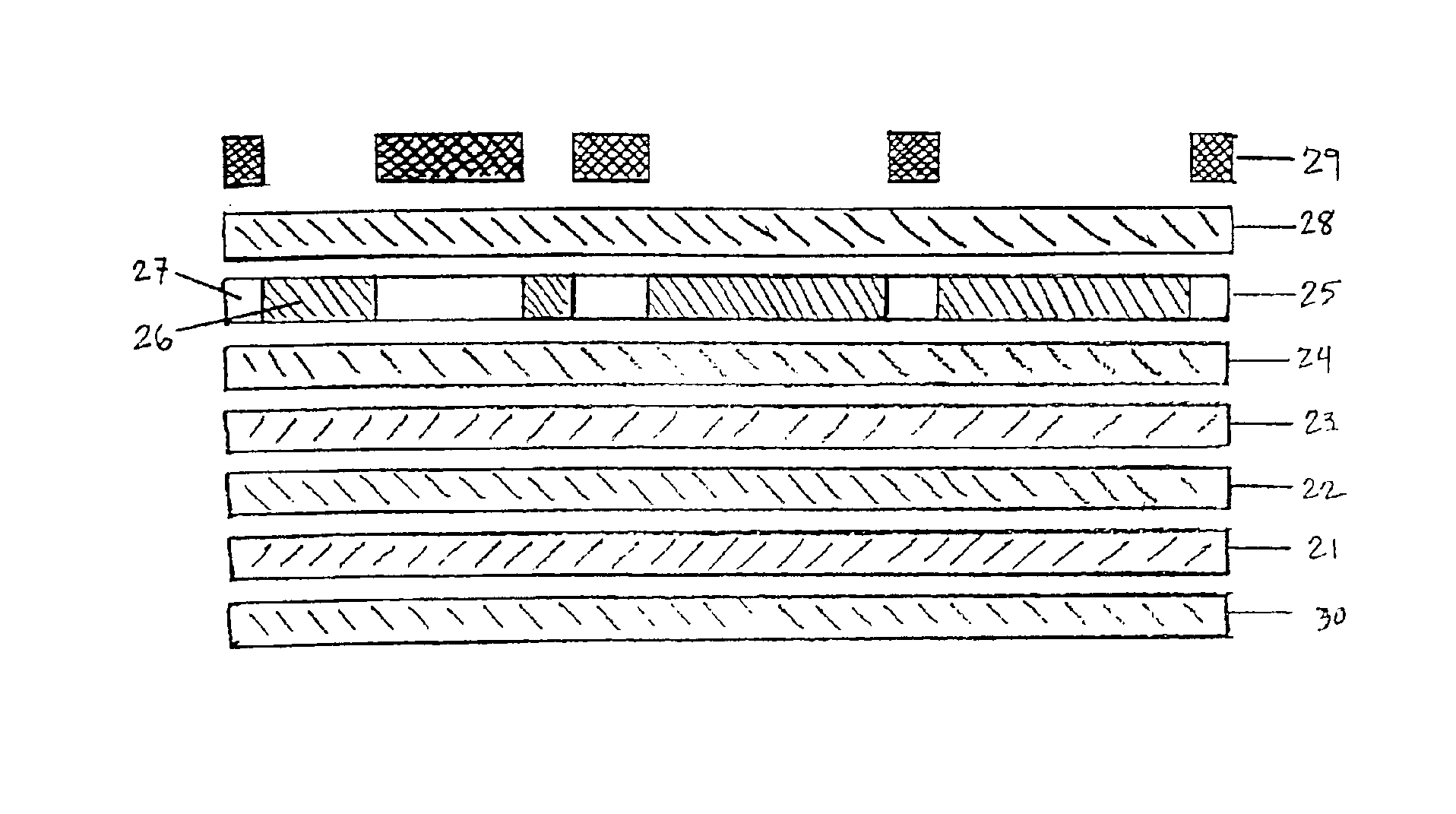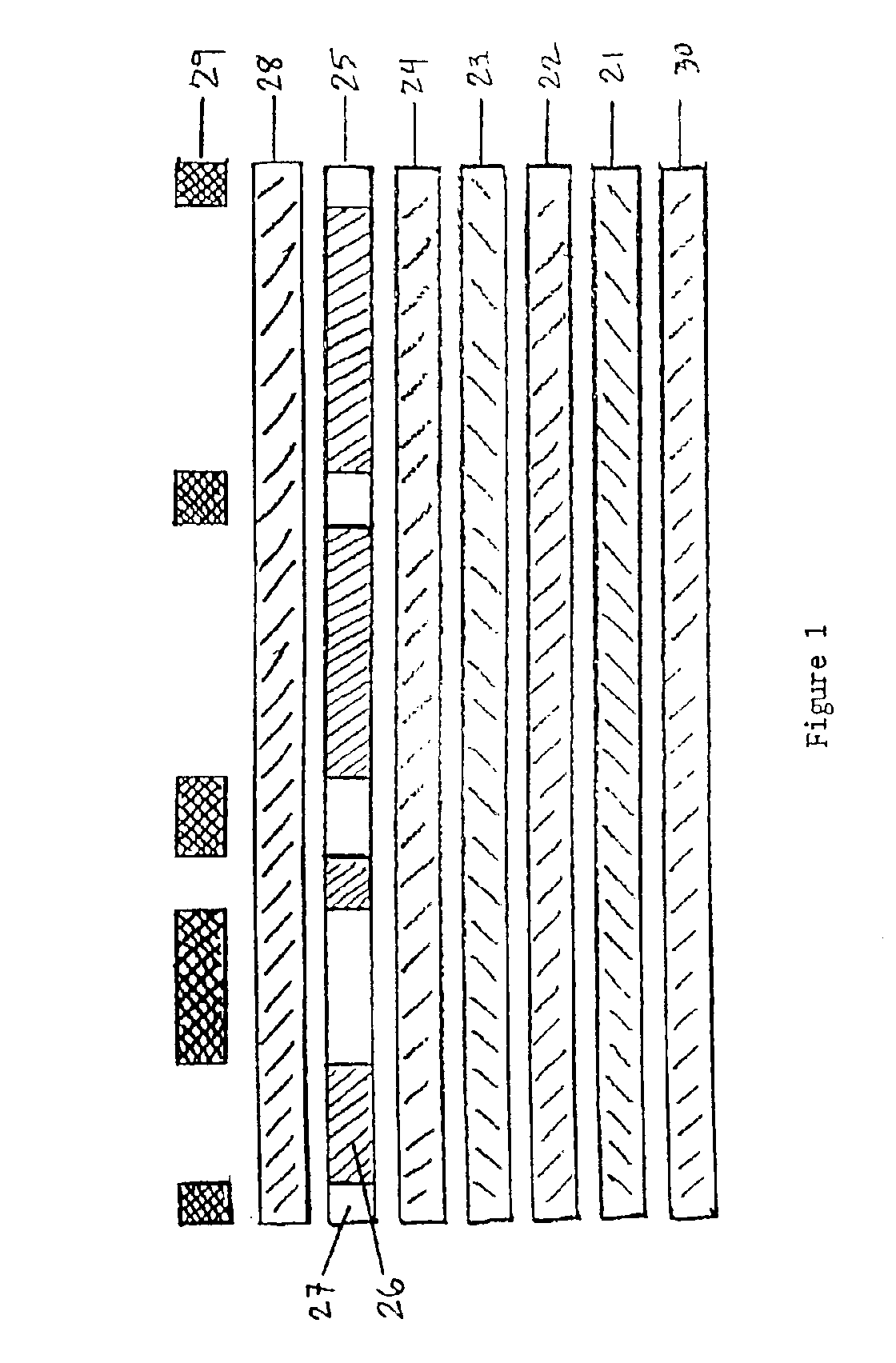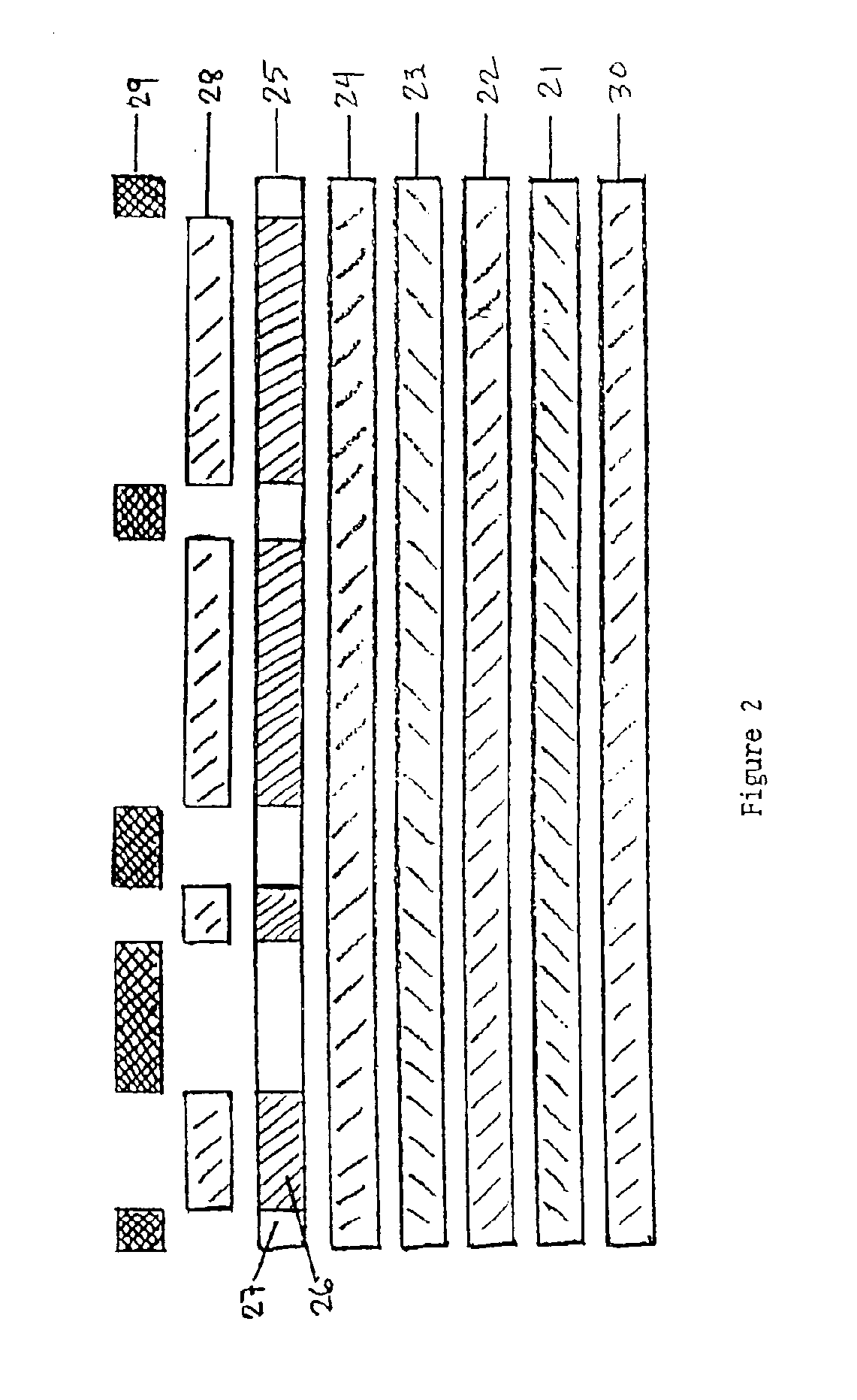Image transfer material with image receiving layer and heat transfer process using the same
a heat transfer process and image transfer technology, applied in the field of image transfer materials, can solve the problems of poor image quality of printed images, poor image quality, poor image quality,
- Summary
- Abstract
- Description
- Claims
- Application Information
AI Technical Summary
Benefits of technology
Problems solved by technology
Method used
Image
Examples
example 1
[0285]In one embodiment of the invention, the barrier layer is a vinyl acetate polymer. An example of this embodiment is Barrier Layer Formulation 1:
Barrier Layer Formulation 1ComponentsPartsVinyl acetate-dibutyl maleate50 partspolymer dispersion (such asEVERFLEX G, HampshireChemical Corporation)Water50 parts.
[0286]Barrier Layer Formulation 1 may be prepared as follows: fifty parts of a vinyl acetate-dibutyl maleate polymer dispersion are combined with fifty parts of water by gentle stirring. The stirring is continued for approximately ten minutes at a moderate stir rate (up to but not exceeding a rate where cavitation occurs). The amount of water added may vary. The only limitation is that sufficient water is added to make the dispersion coatable on the substrate.
example 2
[0287]An example of the PMMA-containing barrier layer is Barrier Layer Formulation 2:
Barrier Layer Formulation 2ComponentsPartsAcetone 99.5%40 parts (weight)2-Propanol 99.5%40 parts (weight)PMMA20 parts (weight).
[0288]Barrier Layer Formulation 2 may be prepared as follows: The acetone and 2-propanol are weighed and mixed. The mixture is stirred. One half of the PMMA is added to the mixture while the mixture is heated to about 25° C. and stirring continues until the PMMA is dispersed. At this point, stirring continues until the remainder of the PMMA is added to the mixture and is dispersed. The mixture is then allowed to cool to room temperature.
example 3
[0289]Another example of the barrier layer of the present invention is Barrier Layer Formulation 3:
MostGeneralPreferablyPreferably(parts(parts(partsCompoundChemical Classby mass)by mass)by mass)UvacureCycloaliphatic10.0-60.020.0-50.030.0-40.01500aepoxideUvacureCycloalipahtic40.0-0.0 30.0-10.025.0-15.01562bepoxy resinDEN 431cEpoxy novolac 5.0-30.010.0-20.012.0-18.0resin2-propanolAlcohol44.4-0.0 38.3-12.430.8-21.7UvacureActivated0.5-7.01.5-6.02.0-4.01590aepoxyEbecrylaryl ketone0.1-1.00.2-0.60.2-0.5BPOaBYK 354cPolyacrylate0.0-1.00.0-0.50.0-0.4BYK 088cPolysiloxane0.0-1.00.0-0.50.0-0.4aUCB Chemical Corporation—Radcure Business Unit bDow Chemicals cBYK Chemie
[0290]Barrier Layer Formulation 3 is prepared as follows: DEN 431, an extremely viscous material, is placed into a beaker first, followed by 2-propanol. The remaining compounds are added in the order in which they appear listed in the table. Manual agitation may be required especially because of the extreme viscosity of DEN 431. Once...
PUM
| Property | Measurement | Unit |
|---|---|---|
| Temperature | aaaaa | aaaaa |
| Percent by mass | aaaaa | aaaaa |
| Percent by mass | aaaaa | aaaaa |
Abstract
Description
Claims
Application Information
 Login to View More
Login to View More - R&D
- Intellectual Property
- Life Sciences
- Materials
- Tech Scout
- Unparalleled Data Quality
- Higher Quality Content
- 60% Fewer Hallucinations
Browse by: Latest US Patents, China's latest patents, Technical Efficacy Thesaurus, Application Domain, Technology Topic, Popular Technical Reports.
© 2025 PatSnap. All rights reserved.Legal|Privacy policy|Modern Slavery Act Transparency Statement|Sitemap|About US| Contact US: help@patsnap.com



